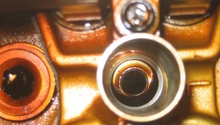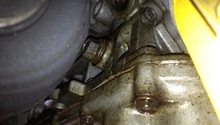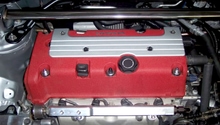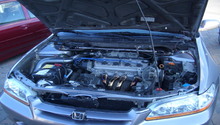Honda Accord: Why is Blue Smoke Coming Out of the Tailpipe?
Don't panic when you see blue smoke, at least not until you find the cause. In some unfortunate cases, it could mean a major repair. But in others, the repair could be very minor.
This article applies to the Honda Accord (1990-2002).
One possible cause of blue smoke coming out from your exhaust is stuck piston rings. Of course, this would be a major repair, but there are also some minor sources that can cause this cool-looking problem. So first, determine the culprit. This article will help you to evaluate and provide you with some diagnostic procedures as well as repair options prior to performing a major rebuild.

Materials Needed
- Compression tester
- Spark plug wrench
- Vacuum gauge
- WD-40
- Engine treatment of your choice
Oil through the rings means the ring is not seating properly. Either the ring is worn to a point where it won't seal against the piston wall properly, or it is stuck in the piston ring groove and cannot expand to seat properly. Stuck rings are usually the sign of debris or even rust in the cylinder. Freeing up the ring is best done by removal and cleaning. Since you are inside the engine, replacing the piston rings is the best option.
Step 1 – Find the source of the oil causing the blue smoke
First, you need to determine that the oil is coming from below the engine and not the valves. Blue smoke, when running the engine hard, is caused from a blow by the piston rings due to high pressure building up in the crankcase. Blue smoke at idle or cold start is most likely valve related. Valve related blue smoke can be from worn valves, stuck valves, dirty valves, worn valve seats, something upstream from the valves such as a leaky turbo return line, or oil being sucked into the vacuum system. Some mechanics will spray WD-40 around a running engine to find vacuum leaks. If the engine increases in rpms, the WD-40 is getting into the vacuum system somewhere.
Stuck rings mean that dirt or rust could be the problem. Rust can form in the engines that sit for a while, especially if the car is subject to humidity or moisture.
Pull the spark plugs, and inspect them visually. An oily plug will indicate oil is entering that cylinder. Similarly, cranking the engine with the plugs out may show oil being ejected as a way to find the culprit.

Pro Tip
Checking the engine with a compression tester provides an idea of how worn the rings and valves are. However, oil rings are not a part of the compression of the engine. Still, a good compression test might help isolate the problem to a certain cylinder or cylinders.
Step 2 – Clean the rings
Cleaning the rings from outside the engine is accomplished with solvents or oil. Certain solvents will unseat the debris and free up the rings, so that they can seal. Oil can help dried or rusty engines to have new life. This is a low cost effort especially for older engines, or engines that haven't been started in a while.
Solvents and oil are often put in through the spark plug hole. Some methods involve input through the intake manifold. Regardless, remember that whatever is poured in affects the seals and engine performance. The cylinder will compress the liquid, so extremely small quantities will reduce the volume that is being compressed. In all cases, research the findings of others and consult the manufacturer's recommendations for the vehicle as well as the solvent.

Step 3 – Get professional feedback
Due to the complexity as well as the cost of an engine rebuild, this diagnosis and repair may best be left to a professional. The precaution of quitting, while you are ahead, applies when a potential engine failure is the result. Although the news may not eventually be good, you may save money by avoiding further damage and wear. Engine damage is a serious diagnosis. Like a serious medical diagnosis, it's always best to get several opinions before deciding on which course of action to take.
Related Discussions
- Discussion: Exhaust Light Blue Smoke - Honda-Tech.com
- Best Method to Loosen Up Stuck Piston Rings - Honda-Tech.com
- Honda Accord Exhaust Blowing Blue Smoke - Honda-Tech.com
- Idle Issues, White Smoke in Exhaust, and Low Oil - Honda-Tech.com






